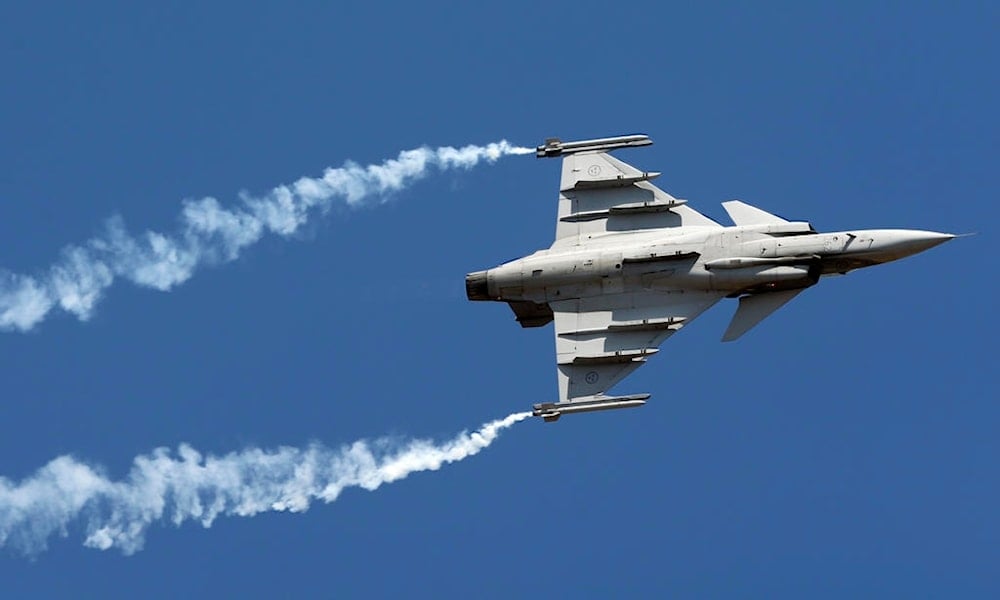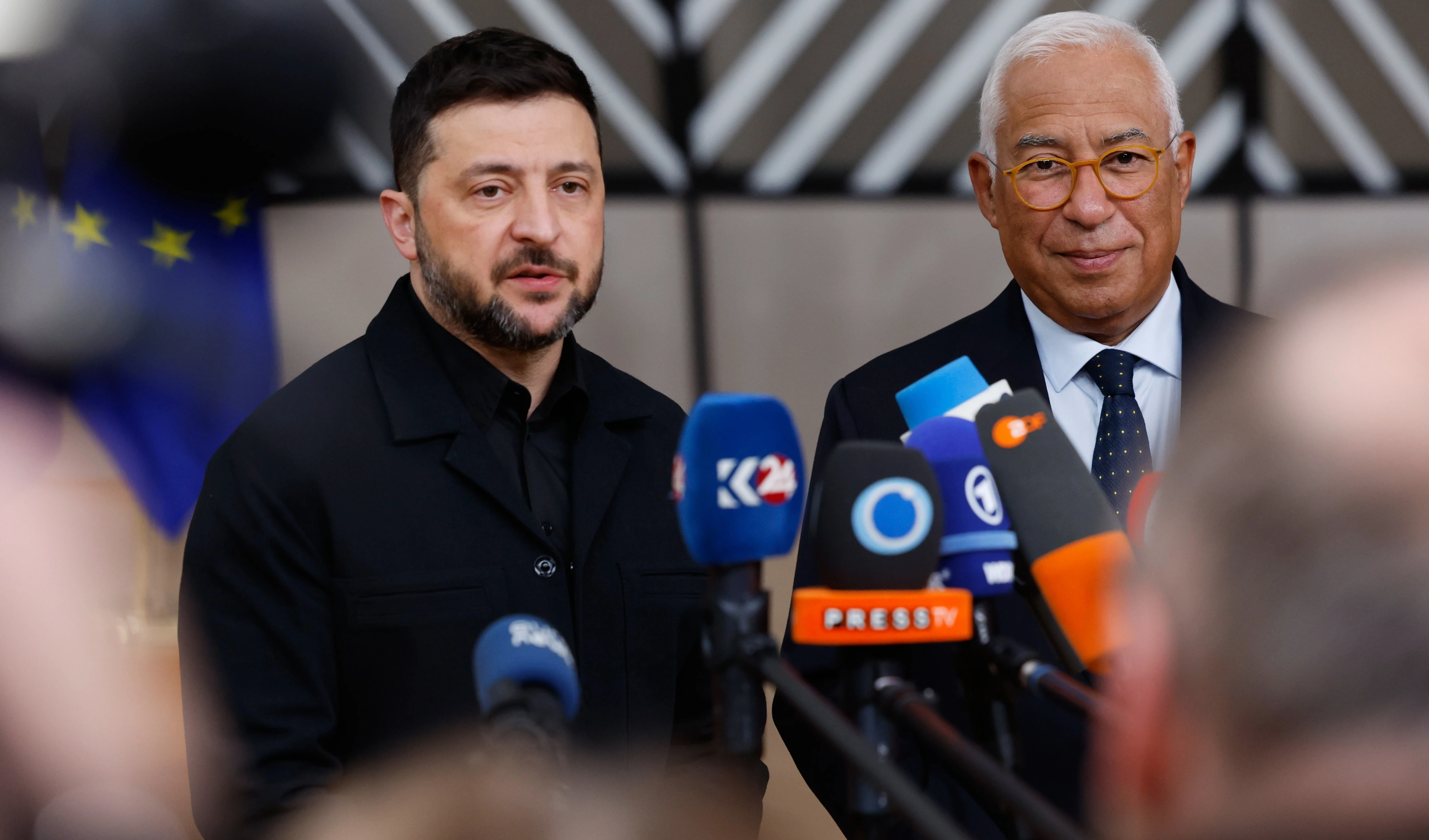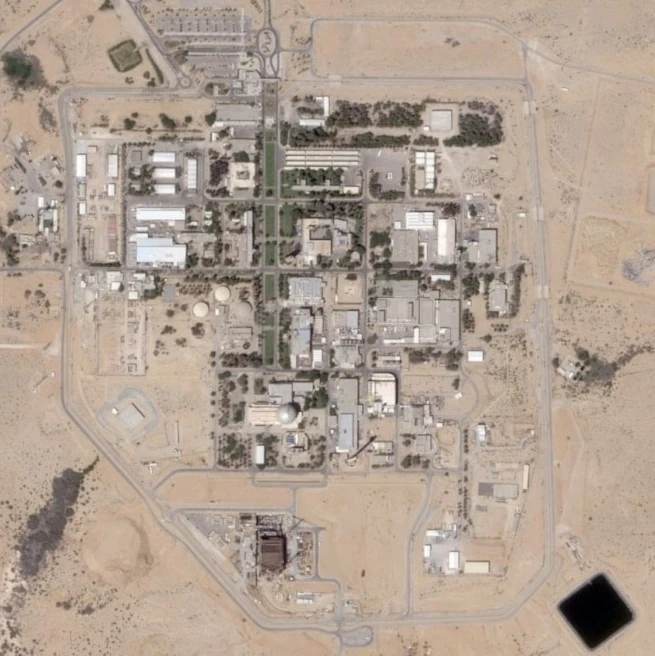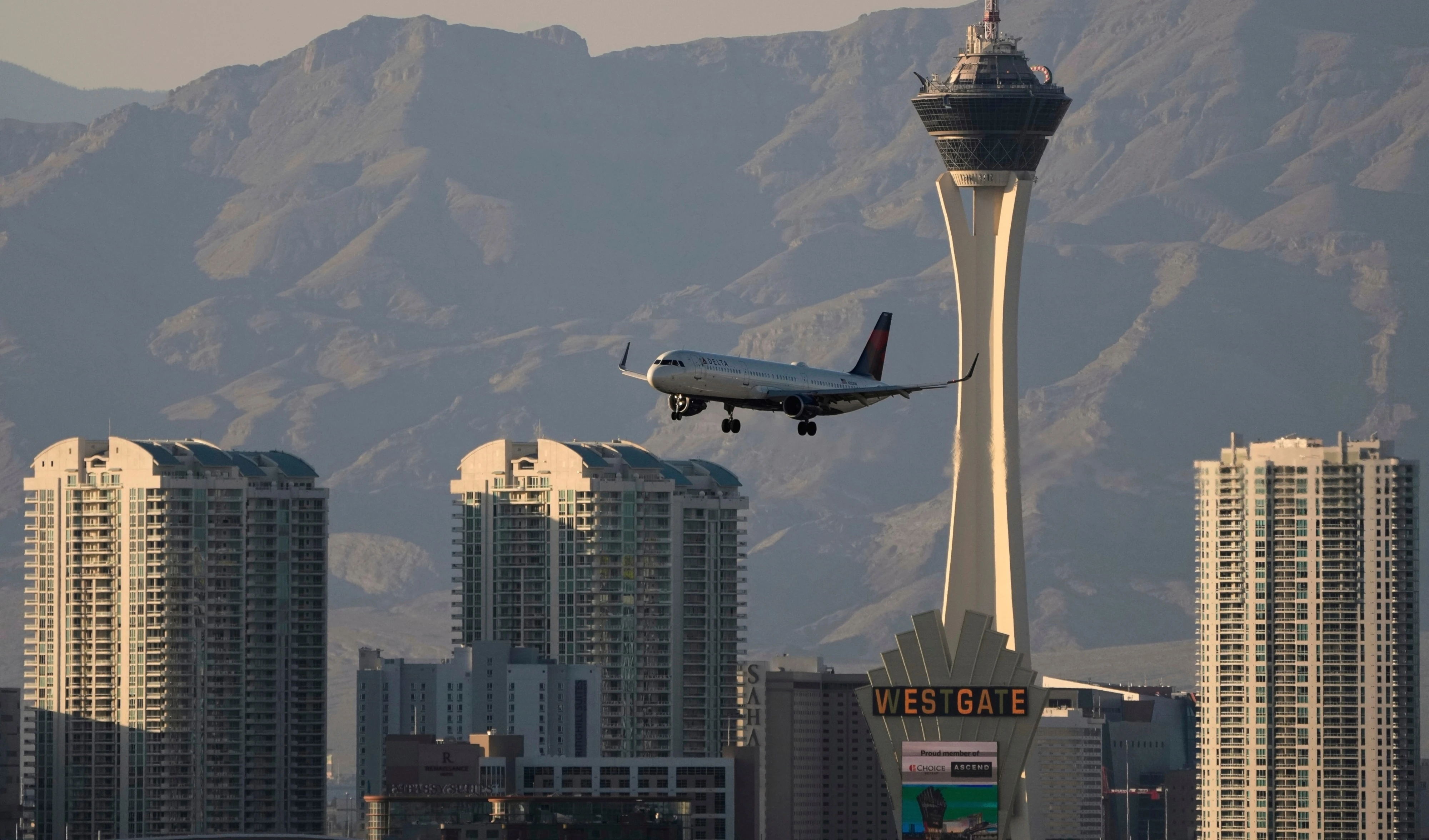Saab to build Ukraine assembly line as Sweden advances Gripen deal
Sweden's Saab plans to establish a Gripen fighter jet assembly line in Ukraine as part of a deal to deliver up to 150 aircraft.
-

Gripen, a Swedish fighter aircraft, performs on the second day of Aero India 2017 at Yelahanka air base in Bangalore, India, Wednesday, Feb. 15, 2017. (AP)
Sweden's defense manufacturer Saab is preparing to establish a final assembly line for Gripen fighter jets in Ukraine, as Stockholm and Kiev move closer to a landmark arms deal involving up to 150 aircraft, according to a report by the Financial Times citing company CEO Micael Johansson.
The announcement follows the signing of a letter of intent last week between Swedish Prime Minister Ulf Kristersson and Ukrainian President Volodymyr Zelensky, setting the stage for the delivery of Gripen E jets to Ukraine within the next three years. Kristersson said the agreement could see between 100 and 150 aircraft supplied to Kiev.
Sweden’s closer defense alignment with Ukraine comes months after its formal accession to NATO on March 7, 2024, ending more than two centuries of military non-alignment. The move, driven by regional security concerns and deepening cooperation with Western allies, was presented by Stockholm as a measure to strengthen collective defense under NATO’s Article 5 framework.
Johansson noted that the project would double Saab's current production workload. "It would be great to set up a [production] capacity for at least final assembly and tests and maybe part production in Ukraine," he told the newspaper.
The financing plan for the multi-billion-dollar deal is still being finalized. Kristersson has reportedly discussed the use of frozen Russian assets as a potential funding source with EU leaders. Johansson confirmed that discussions are underway on the division of financial responsibility, saying, "What needs to come into place is this financing solution that's being discussed now at the political level: how much burden will Sweden take in terms of financing and risk, and how much can be shared without the countries, and how much can be used in terms of the Russian confiscated assets. That's still not 100 percent clear."
Asset Dilemma
The proposal to use frozen Russian funds, however, carries legal and financial uncertainty. Under international law, sovereign assets are typically protected by immunity, and converting them for military financing could be viewed as expropriation. European institutions such as Euroclear and the European Central Bank have warned that repurposing these reserves may trigger lawsuits and undermine global trust in Western financial systems. Some EU officials are therefore exploring whether only the interest generated by the assets could be redirected to Ukraine, while leaving the principal untouched.
Politically, the move risks provoking Russian retaliation and could set a precedent that alters how sovereign reserves are treated globally, potentially prompting other nations to diversify away from Western financial markets. Still, proponents argue that the use of these assets would send a strong signal that Moscow should bear part of the financial burden of its military campaign in Ukraine.
Global Expansion
Saab also intends to expand its production footprint globally, with plans for new facilities in Brazil and potentially in Canada and other European states.
Moscow, meanwhile, has condemned continued Western military support to Ukraine, asserting that arms deliveries prolong the conflict. Russian Foreign Minister Sergey Lavrov has reiterated that any shipments containing weapons destined for Ukraine "will be considered legitimate targets" by Russian forces.
Read more: Western calls for ceasefire meant to buy time for Zelensky: Lavrov

 3 Min Read
3 Min Read











